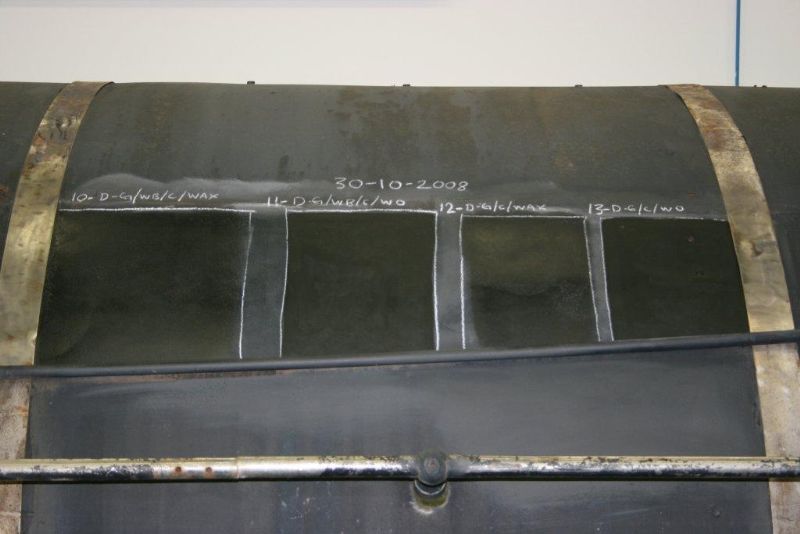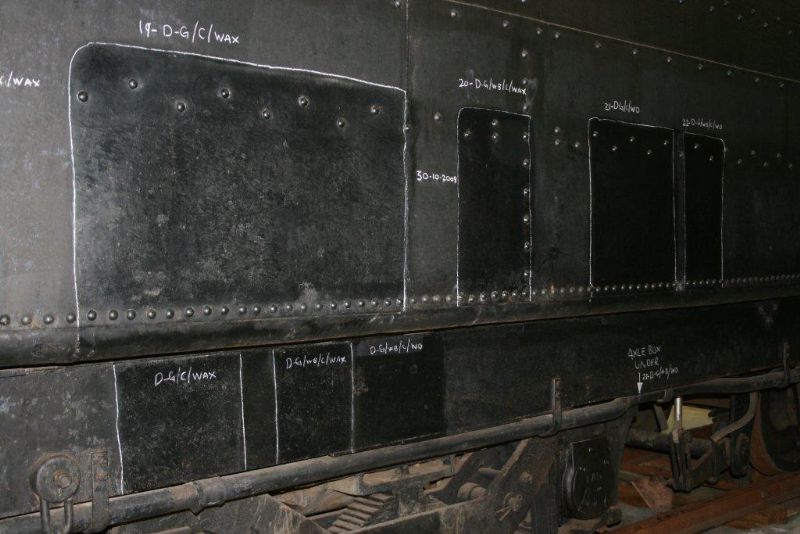SAR 15F 3007 Steam Locomotive
Ian Clark was appointed by Glasgow City Council through competitive tender to carry out a comprehensive condition survey and author a conservation method statement for long-term preservation as a key display object for the Riverside Museum, Glasgow.
Project Background
Engine number 3007 is a locomotive type 4-8-2 - Class 15F built in 1944 by the North British Locomotive Company, Glasgow.
The engine was one of a second batch of 60 locomotives supplied to the South African Railways by NBL between 1944 – 45 which bore SAR running Nos. 2997 – 3056. It was constructed to 3’ 6’’ gauge.
In total 255 Class 15F engines were built in 6 lots by 4 makers over a period of 10 years.
Engine 3007 was withdrawn form service in 1988 on what became known as ‘Black August’ and was laid up in a scrap line in Bloemfontein.
Glasgow City Council & Culture & Sport Glasgow were very interested in preserving a NBL, Glasgow built locomotive with a view to conserving and displaying the engine as part of the new Riverside Museum development in Glasgow
The locomotive was identified and secured for preservation and in June 2007 left Bloemfontein for the port of Durban from where it was shipped to Germany then onto England and finally by road transport to Glasgow.
Project Strategy
The ICR commission enhanced the project conservation management plan and conservation strategy being developed for the long-term preservation and future display of the locomotive as a pivotal element of the Riverside Museum Project.
A specific project requirement was that the locomotive and tender be conserved and displayed in a form that was consistent to, or indicative of its condition at the time of being withdrawn from service in 1988 but reflective and sympathetic to the influences and conditions experienced during it’s time spent in the scrap line.
The conservation method statement as defined and proposed by ICR within the project preservation strategy was intelligent and flexible and embraced both the engineering and railway specific sensitivities consistent with the locomotive and its future display and interpretation.
During the Condition Survey, ICR produced numerous test patches utilising a number of different cleaning techniques and surface protection which were monitored over a period of a year. These test patches enabled the conservation steering group to assess the technical performance and aesthetic properties of each individual system.
It was a prerequisite that the adopted CMS was able to demonstrate and promote the use of proven conservation and restoration techniques and to disseminate engineering/industrial heritage conservation best practice.
The CMS had to demonstrate a clear understanding of its required form and function and to deliver the project within concise technical and ethical parameters. The proposed practical methodologies needed to promote and positively contribute to the project sustainability, deliver best value and ultimately complete the works with pragmatism, on time and within budget.
During the project delivery phase Ian Clark was retained as a consultant and worked closely with Glasgow Museums conservation steering group.
|
|
|
|
|
|
|
|
© Glasgow Life

.jpg)
.jpg)
.jpg)
 (2).jpg)

